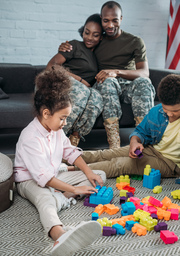Celebrating Your Baby’s First Birthday
It only happens once in a lifetime for everyone. A moment of immense joy and pride for every parent. Your baby’s first birthday is truly a celebration of growth and the beginning of a journey marking many more special days to come. Not just for the baby but for you, family, and friends.
Reaching the first-year milestone is of course very exciting. But it can also be daunting as you strive to make it the most special day possible. But worry not! We are here to give you some brilliant ideas to make your little one’s big day memorable, meaningful, and fun for both the tiny tots and adults in attendance.
Choosing the Perfect Theme
A theme can set the tone for the celebration and can be a fun way to bring creativity and color to the party. Consider themes such as ‘Time Flies’ marking the fast-paced year, a ‘Wild One’ safari showcasing your little adventurer, or a ‘Winter Onederland’ if your baby’s birthday falls in colder months. Themes can be subtle or elaborate, but ensure they are aligned with the enjoyment and comfort of your baby.
If you’re looking for something whimsical and enchanting, a fairy-themed first birthday celebration can be an exquisite choice. It allows you to embellish your venue with floral accents, fairy lights, and delicate decorations that can transport your guests into a magical world fit for your little one’s first major milestone.
Fun for Adults
Ensuring the adults are not left out is key to a memorable party. Along with good food, provide opportunities for interaction. An enjoyable way is to have baby-related games, like ‘Guess the Baby Photo’ or baby trivia. Keep some areas baby-free for adults to socialize while still keeping an eye on their little ones.
Baby-Friendly Party Foods
First birthdays are special, and the food should be too! Serve up a variety of baby-friendly fare that is both nutritious and appealing to young guests. Think of mini portions like fruit puree shots, baby pancakes, or teething biscuits. For the adults, simple yet tasty finger foods can complement the theme and ensure everyone is well-fed and happy.
Planning for the Unexpected
It’s important to anticipate the unexpected when organizing your baby’s first birthday bash. Have a plan for dealing with any little surprises that may arise, such as an unexpected mess or a mini tantrum. Keeping a calm demeanor and having a kit ready with essentials like wipes, extra clothes, and snacks can help mitigate any temporary chaos and ensure the party continues to run smoothly.
Capturing the Memories
First birthdays are a one-time affair; therefore, capturing those moments is paramount. Hiring a professional photographer can free parents from the task and ensure high-quality images. Take time to research the setting you may want for your baby’s photo shoot, indoor or out, and what clothing they should wear. Alternatively, setting up a DIY photo booth with fun props related to the theme can involve guests in making and capturing memories. Do not forget to document those little details that make your celebration unique!
Invitations and RSVPs
Creating beautiful and personalized invitations can excite your guests about the event. Whether you choose digital invites or traditional paper ones, ensure they reflect your chosen theme and contain clear information about the party. It’s also wise to track RSVPs diligently to know exactly how many guests to expect, which aids in planning for space, food, and party favors.
Keeping the Party Baby-Centric
While it is tempting to plan for adults’ enjoyment, remember the party is for the baby. Schedule the celebration around your child’s naptime, create a safe play area with age-appropriate toys, and keep the event short. Familiar nursery rhymes as background music or a small puppet show can entertain while making the baby feel comfortable and engaged.
Thank You Notes
After the party winds down, don’t forget to express your gratitude to those who celebrated this special day with you. Sending out thank you notes, or personalized messages can be a heartfelt way to acknowledge your guests’ presence and contributions. This small gesture of appreciation is the perfect way to conclude your baby’s memorable first birthday celebration.
Practical Considerations
- Venue: Select a venue that is child-proof and comfortable for both babies and adults.
- Decor: Keep the decor visually stimulating for babies with contrasting colors and safe elements.
- Safety: Ensure that all party items are baby-safe to avoid any potential mishaps.
- Duration: Limit the duration of the party to a couple of hours to prevent baby fatigue.
- Gifts: Suggest books, savings bonds, or contributions to a college fund as gift options that are both meaningful and long-lasting.
Conclusion
Your baby’s first birthday is a rite of passage that deserves celebration. While planning the perfect party takes effort, the joy and laughter it brings are incomparable. By focusing on a baby-friendly environment, engaging activities, and treasured keepsakes, you can create a festive occasion that honors this milestone. Enjoy every giggle, splash of cake, and twirl of the party hat, for these are the moments that will become precious memories for years to come.









